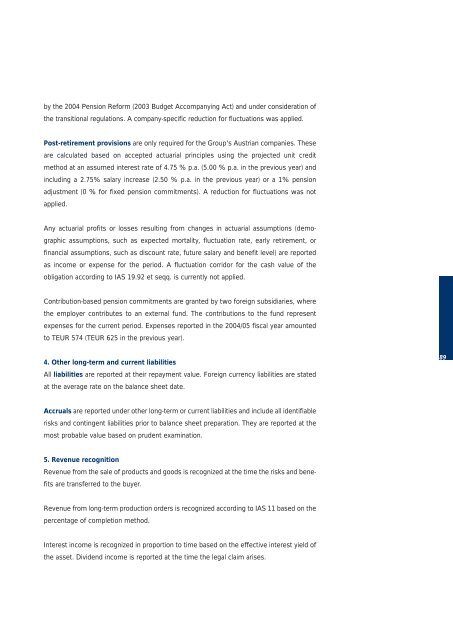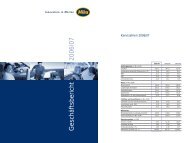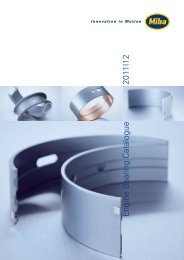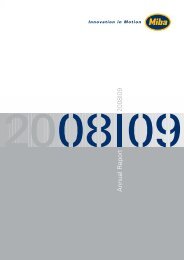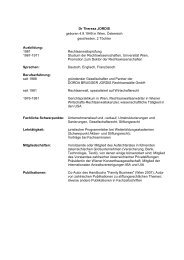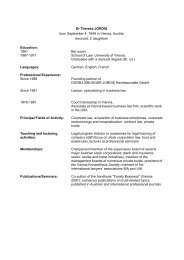Annual Report - Miba
Annual Report - Miba
Annual Report - Miba
- TAGS
- annual
- miba
- www.miba.com
You also want an ePaper? Increase the reach of your titles
YUMPU automatically turns print PDFs into web optimized ePapers that Google loves.
y the 2004 Pension Reform (2003 Budget Accompanying Act) and under consideration of<br />
the transitional regulations. A company-specific reduction for fluctuations was applied.<br />
Post-retirement provisions are only required for the Group's Austrian companies. These<br />
are calculated based on accepted actuarial principles using the projected unit credit<br />
method at an assumed interest rate of 4.75 % p.a. (5.00 % p.a. in the previous year) and<br />
including a 2.75% salary increase (2.50 % p.a. in the previous year) or a 1% pension<br />
adjustment (0 % for fixed pension commitments). A reduction for fluctuations was not<br />
applied.<br />
Any actuarial profits or losses resulting from changes in actuarial assumptions (demographic<br />
assumptions, such as expected mortality, fluctuation rate, early retirement, or<br />
financial assumptions, such as discount rate, future salary and benefit level) are reported<br />
as income or expense for the period. A fluctuation corridor for the cash value of the<br />
obligation according to IAS 19.92 et seqq. is currently not applied.<br />
Contribution-based pension commitments are granted by two foreign subsidiaries, where<br />
the employer contributes to an external fund. The contributions to the fund represent<br />
expenses for the current period. Expenses reported in the 2004/05 fiscal year amounted<br />
to TEUR 574 (TEUR 625 in the previous year).<br />
4. Other long-term and current liabilities<br />
All liabilities are reported at their repayment value. Foreign currency liabilities are stated<br />
at the average rate on the balance sheet date.<br />
Accruals are reported under other long-term or current liabilities and include all identifiable<br />
risks and contingent liabilities prior to balance sheet preparation. They are reported at the<br />
most probable value based on prudent examination.<br />
5. Revenue recognition<br />
Revenue from the sale of products and goods is recognized at the time the risks and benefits<br />
are transferred to the buyer.<br />
Revenue from long-term production orders is recognized according to IAS 11 based on the<br />
percentage of completion method.<br />
Interest income is recognized in proportion to time based on the effective interest yield of<br />
the asset. Dividend income is reported at the time the legal claim arises.<br />
89


